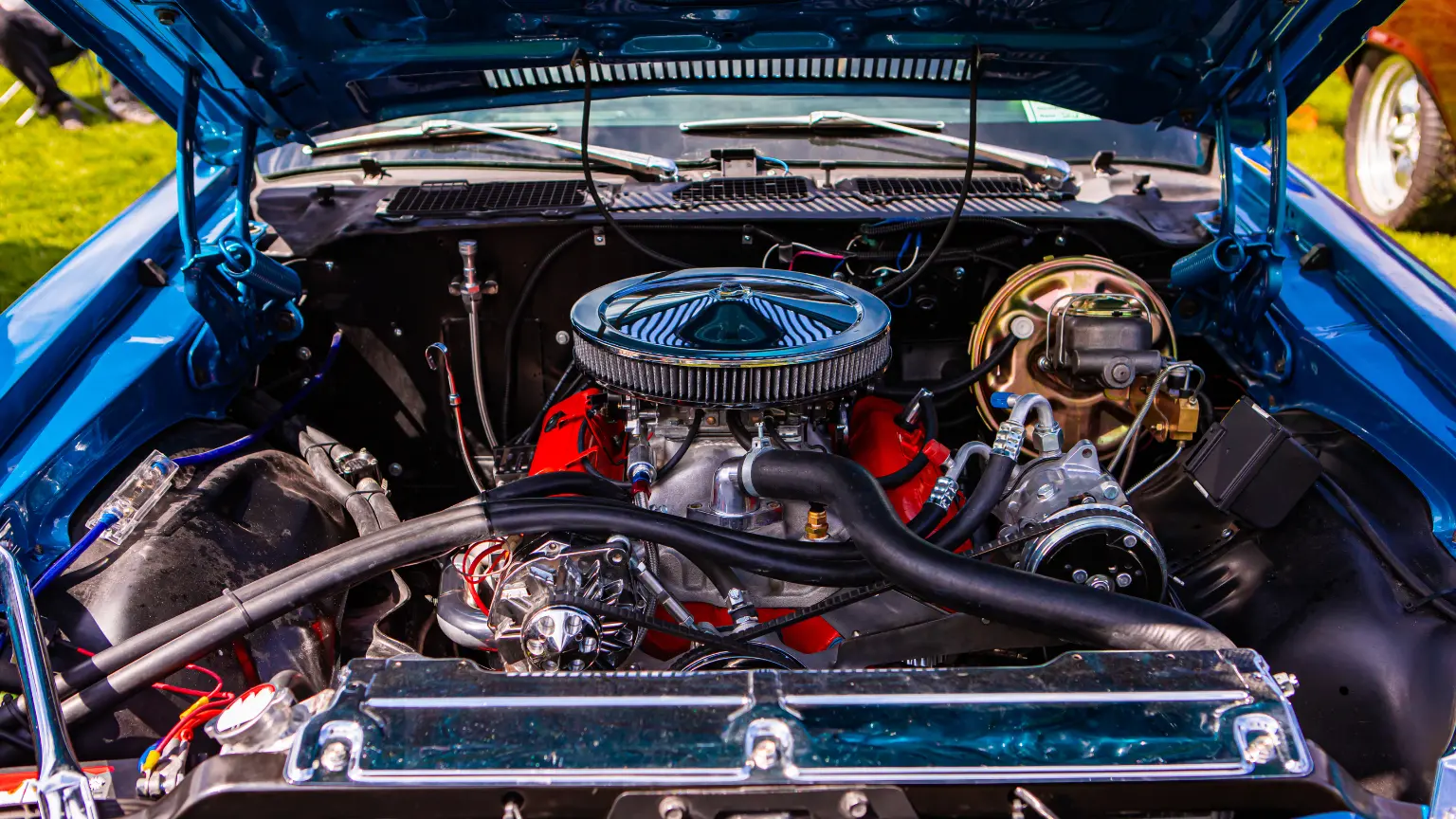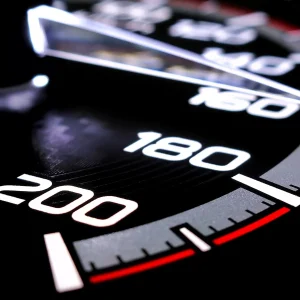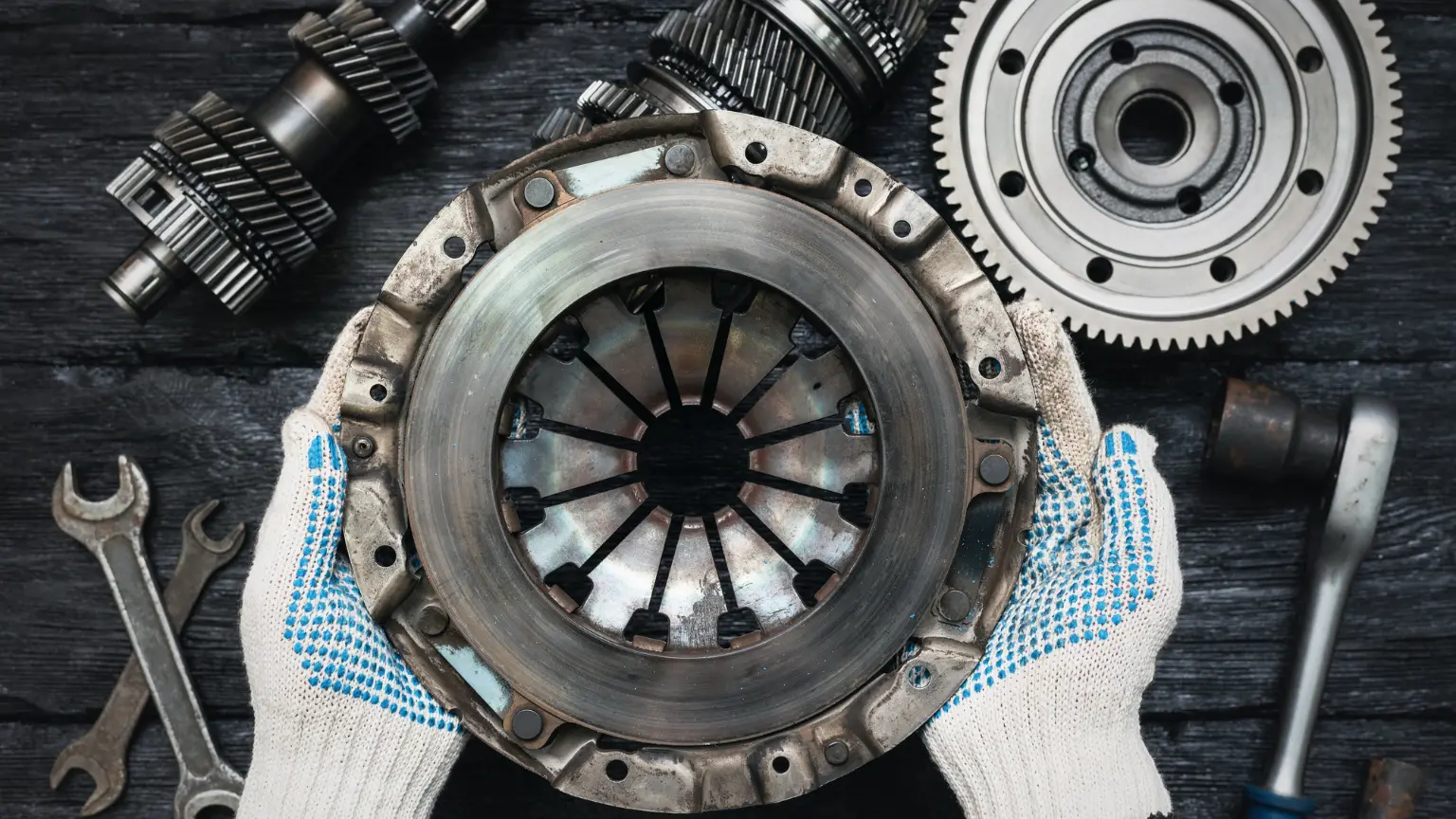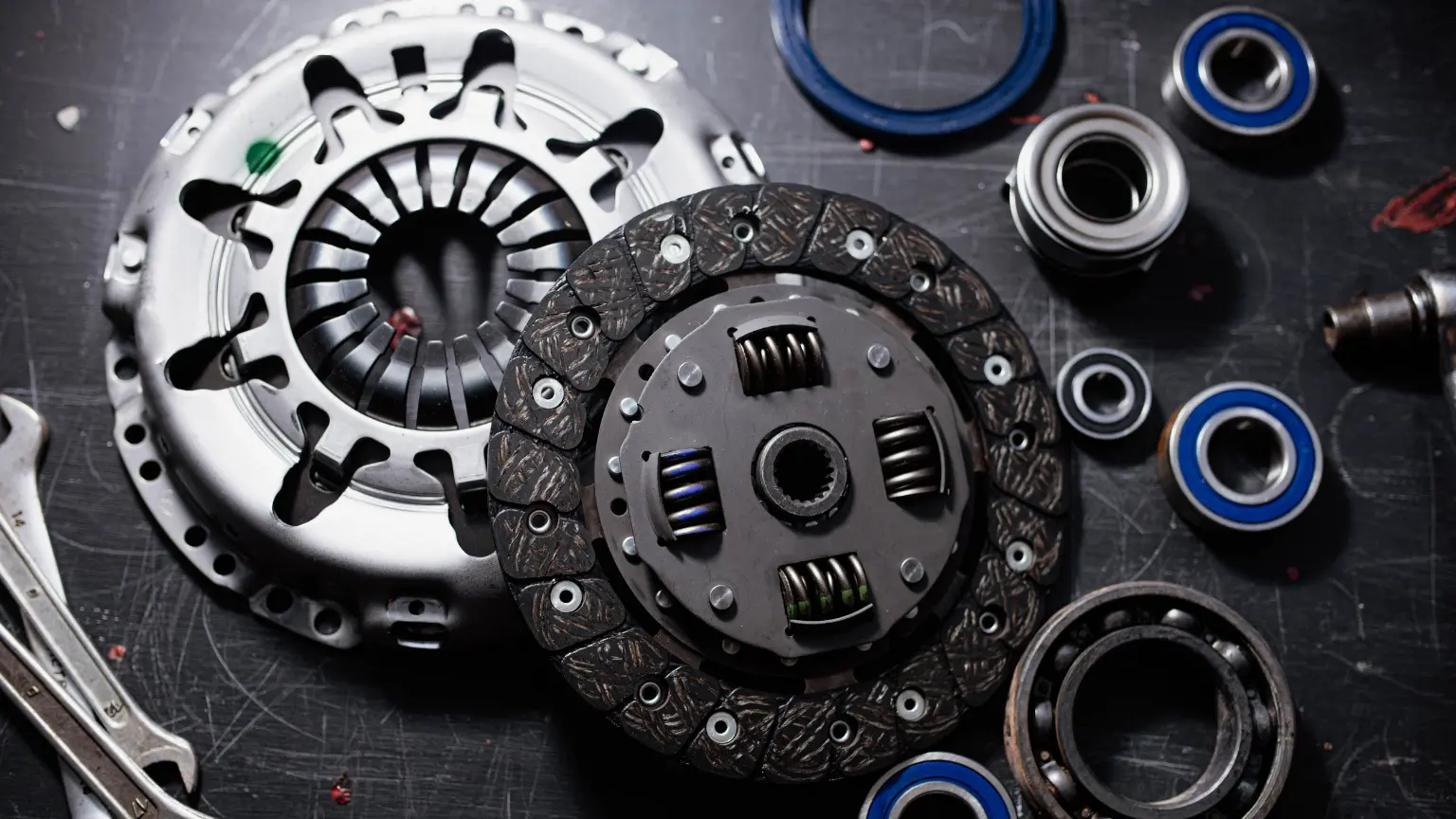The Role Of Transmissions In Vehicle Performance And Efficiency
A vehicle’s transmission channels engine power to the wheels, shaping acceleration, handling, and fuel economy. From manual to automatic and emerging CVT/DCT tech, knowing types and maintenance is crucial.

Transmissions are the heart of every vehicle, ensuring that the power generated by the engine is efficiently transmitted to the wheels. This critical component determines how well a car accelerates, its fuel economy, and overall performance on the road. Whether it's a manual transmission or an automatic transmission, understanding its role is essential for any driver. Not only does the transmission affect a vehicle's speed and handling, but it also plays a pivotal role in optimizing fuel efficiency and ensuring a smooth ride. Without a properly functioning transmission, a car is as good as immobile, underscoring the importance of regular maintenance and understanding how different transmission types work.

Types of Vehicle Transmissions
Vehicle transmissions come in several distinct types, each engineered to meet specific driving needs and preferences. Each transmission type plays a unique role in vehicle operation, balancing factors like performance, efficiency, driving experience, and adaptability to modern automotive innovations.
Manual Transmission
When you think of a manual transmission, picture yourself in the driver's seat, shifting gears with your arm while the other hand manages the steering wheel - it's all about engagement. Manual transmissions provide drivers with direct control over the car's power, making them a favorite among those who appreciate the feeling of being in charge. This type of transmission is not just about the thrill; it's often praised for its durability and lower repair costs. With a manual, you decide when to shift gears, allowing for more precise control of the vehicle's performance and potentially better fuel efficiency.
Automatic Transmission
Switch gears (pun intended) to the automatic transmission, and you find the embodiment of convenience. Here, the car thinks for you, automatically shifting gears based on your speed and driving conditions. This means you can focus more on the road and less on what your hands are doing. Automatic transmissions have become incredibly popular due to their ease of use, especially in stop-and-go traffic where constant manual shifting can be a hassle. While they used to lag behind manuals in terms of fuel efficiency and speed, modern advancements have greatly reduced these gaps. For many, the automatic transmission's benefits, including smoother rides and less driver fatigue, make it the go-to choice.
Emerging Transmission Technologies
As cars evolve, so do their components, and transmissions are no exception. Emerging technologies, particularly in the realm of transmission systems, are redefining what vehicles can achieve, merging manual precision with automatic convenience to cater to a broader spectrum of driving preferences. Dual-clutch transmissions (DCTs) represent a significant leap in this evolution. DCTs are ingeniously designed with two separate clutches for odd and even gear sets. This design allows for nearly instantaneous gear shifts, significantly reducing the power interruption common in traditional automatic transmissions. The result is a smoother, faster shift that can rival the manual transmission's responsiveness while maintaining the ease of an automatic.
Continuously Variable Transmissions (CVTs) employ a different approach by eliminating distinct gears, instead offering a seamless 'infinite' range of gear ratios. This innovation enables the engine to operate at an optimal power level across a wider range of driving conditions, thereby enhancing fuel efficiency and providing a smoother acceleration experience. CVTs adapt dynamically to driving conditions, ensuring the engine runs more efficiently and reducing overall fuel consumption and emissions.
How Transmissions Influence Vehicle Performance and Fuel Efficiency
Transmissions play a pivotal role in shaping both the performance and fuel efficiency of modern vehicles by managing how the engine’s power is delivered to the wheels. The ability of a transmission to select or adjust these ratios according to driving conditions is fundamental to optimizing both performance and economy.
The Role of Gear Ratios
Gear ratios in a transmission determine how much the engine's output is modified before it reaches the wheels. The right gear ratios can make a vehicle quicker off the line or more fuel-efficient at highway speeds. For manual transmissions, choosing the correct gear ratio at the right time requires driver skill and understanding of the vehicle's power characteristics. In automatic transmissions, the system's ability to select the optimal gear ratio for current driving conditions can greatly enhance performance.
Importance of Transmission Fluids
These specialized fluids serve multiple critical functions: they lubricate the transmission's moving parts, reducing friction and wear; in automatic transmissions, they also generate the hydraulic pressure necessary to shift gears; and they help cool the transmission by dissipating heat generated from its operation. Over time, transmission fluid undergoes thermal breakdown due to the high temperatures encountered during normal operations. This breakdown diminishes the fluid's lubricating qualities and its ability to maintain optimal hydraulic pressure. As a result, components within the transmission may experience increased friction and wear, which can lead to overheating, delayed gear shifting, and in severe cases, complete transmission failure.
Furthermore, contaminants such as metal shavings and clutch material can accumulate in the fluid over time, further impairing its performance and the transmission's efficiency. These contaminants can cause blockages and interfere with the fluid's flow and pressure, exacerbating wear and tear on the transmission. Regularly checking the transmission fluid's level, color, and smell is a straightforward way to monitor the health of your transmission.
Drivetrain Integration
A well-integrated drivetrain ensures that power is transmitted smoothly and with minimal loss from the engine to the wheels. This requires a harmonious design where the engine, transmission, and differential work in sync, tailored to the vehicle's specific performance goals. Whether it's a manual or automatic transmission, the level of integration with the drivetrain components can significantly affect the vehicle's responsiveness and driving experience.
Transmission Maintenance and Troubleshooting
Identifying Common Transmission Problems
Familiarizing yourself with the signs of transmission troubles can prevent minor issues from escalating into major repairs. Symptoms such as unusual noises (grinding or whining), difficulty in shifting gears, slipping gears, or the presence of a burnt smell can indicate transmission problems. For manual transmissions, a common sign is a clutch that feels spongy or slips. Automatic transmissions might experience delayed engagement when shifting. Recognizing these signs early and consulting a professional can save time and money.
Regular Maintenance Checks
Regular maintenance is the key to extending the life of your transmission and ensuring smooth operation. This includes periodic checks of the transmission fluid level and condition, replacing the fluid and filter as recommended by the manufacturer, and having a professional inspect the transmission for any potential issues. Staying proactive with maintenance helps prevent wear on components, preserving the transmission's efficiency.

Choosing a Reliable Transmission Repair Shop or Mechanic
Choosing the right repair shop or mechanic for your transmission needs is a decision that shouldn't be taken lightly. The transmission is one of the most complex and crucial components of your vehicle, requiring skilled hands for maintenance and repair. Here are some detailed guidelines to help you make an informed decision:
- Look for Specialization: Opt for a mechanic or shop with a strong focus on car transmissions. This is particularly important if your vehicle has a specialized transmission, such as a manual, continuously variable transmission (CVT), or an advanced automatic. Shops that specialize in transmissions are more likely to have the specific knowledge, tools, and experience needed to diagnose and fix issues accurately. Their expertise can make a significant difference in the quality of repairs, potentially saving you time and money.
- Check Reviews and References: Take the time to research online reviews on platforms like Google, Yelp, or specialized automotive forums. Positive reviews are a good indicator of reliable service. Additionally, don't hesitate to ask the shop for references from past customers. A reputable shop should be willing to provide this information, allowing you to measure their level of customer satisfaction and quality of work through firsthand accounts.
- Ask About Experience and Certifications: It's important to inquire about the mechanics' experience with your specific type of vehicle and transmission. Experience can greatly influence the quality of diagnostics and repair. Certifications from recognized automotive organizations, such as ASE (Automotive Service Excellence), indicate that the mechanic has met certain standards of knowledge and professionalism in the automotive repair industry, offering an added layer of confidence in their abilities.
- Understand Warranty and Services: Before committing, understand the warranty terms for any repair work. A comprehensive warranty indicates the shop's confidence in its workmanship. Be clear on what services are included, the duration of the warranty, and what it covers. This understanding can prevent future misunderstandings and ensure that you're getting value for your investment.
- Compare Estimates: Obtain estimates from multiple shops to ensure you're receiving a competitive rate for the necessary repairs. However, the cheapest option isn't always the best—consider the quality of parts, warranty, and the shop's reputation. A fair, competitive estimate from a shop with a good track record of specialized service and customer satisfaction is often the best choice.
Making the right choice in a car transmission mechanic or repair shop ensures your vehicle receives the highest quality of care, extending its life and performance. Taking these steps to evaluate potential mechanics or shops can lead to a more reliable and satisfactory service experience, keeping your vehicle running smoothly for years to come.
Best Practices in Transmission Care
Adopting best practices for transmission care is not just about regular maintenance; it's also about understanding and mitigating the everyday actions that can stress and strain this crucial component. One common mistake is towing heavy loads without the proper setup or preparation. Vehicles have specified towing capacities, and exceeding these limits can overburden the transmission. During towing, the transmission works harder to manage the extra weight, which can lead to increased heat and stress on the system.
Similarly, unnecessary shifting between gears, such as repeatedly moving into and out of 'park' or 'drive' at stop lights, or frequent hard acceleration followed by sudden stops, can strain the transmission. These actions can cause excessive wear on the transmission's internal components, leading to a shortened lifespan and potential failures. Following the manufacturer's guidelines for transmission care is paramount. This includes regular servicing as recommended in your vehicle's service manual, which often involves checking the transmission fluid level and condition and replacing it at prescribed intervals.
Key Considerations for Selecting the Appropriate Transmission
Choosing the right transmission for a vehicle is a decision that hinges on several factors, including the vehicle type, its intended use, and the desired balance between performance and efficiency. At the core, the transmission must complement the engine and overall design of the vehicle, ensuring that the driver’s needs are met without compromising on reliability or cost-effectiveness. For instance, performance-oriented vehicles such as sports cars often benefit from manual transmissions or advanced dual-clutch systems, as these offer greater driver engagement and more precise control over gear changes. This direct control can enhance acceleration and responsiveness, making the driving experience more dynamic and enjoyable for enthusiasts who prioritize performance. On the other hand, family sedans, SUVs, and commuter vehicles frequently favor automatic transmissions or continuously variable transmissions (CVTs), which prioritize convenience, smoothness, and fuel efficiency. Automatics reduce driver workload, especially in stop-and-go urban traffic, while modern CVTs maintain the engine at its most efficient operating range, maximizing fuel economy and providing seamless acceleration.
Intended use also plays a pivotal role in transmission selection. Vehicles designed for heavy towing or commercial applications, such as trucks and vans, often require robust automatic transmissions with reinforced components to handle higher torque loads and frequent gear changes under stress. These transmissions are engineered for durability and consistent performance, ensuring reliability over long distances and under challenging conditions. Conversely, vehicles used primarily for city driving or short commutes may benefit from compact automatics or CVTs, which offer ease of use and better efficiency at lower speeds. For hybrid and electric vehicles, specialized transmissions are used to optimize the unique power delivery characteristics of electric motors and further enhance efficiency.
Balancing performance and efficiency is perhaps the most nuanced aspect of transmission selection. While manual transmissions traditionally offered superior fuel economy and performance, advancements in automatic and dual-clutch technologies have closed this gap significantly. Modern automatics can adapt shift patterns to driving style and road conditions, delivering both spirited performance and economical operation when needed. CVTs, meanwhile, excel in efficiency but may sacrifice some of the sporty feel that specific drivers value. The right transmission aligns with the driver’s expectations, the vehicle’s purpose, and the manufacturer’s design philosophy. By carefully considering these elements—vehicle type, intended use, and the desired equilibrium between performance and efficiency—buyers can select a transmission that not only meets their immediate needs but also contributes to long-term satisfaction and value.
Enhancing Transmission Life and Vehicle Performance
Modifications and Upgrades
For those seeking to boost their vehicle's performance, considering modifications and upgrades to the transmission can be a game-changer. Options such as installing a higher-performance torque converter in automatic transmissions or upgrading the clutch in manual transmissions can enhance durability. Additionally, software updates for vehicles with automatic transmissions can refine shift patterns for improved acceleration and efficiency. However, it's important to consult with a professional before undertaking any modifications to ensure compatibility with your vehicle and to avoid inadvertently reducing its lifespan.
Future Trends in Transmission Technology
The landscape of automotive technology is rapidly evolving, heralding a future where transmissions are not just a component of the vehicle. As manufacturers strive to meet the increasing demand for greener, more efficient vehicles, innovation in transmission technology plays a crucial role. Here's a deeper dive into the emerging trends that are set to redefine the future of vehicle transmissions:
- Electrification of Transmissions: The surge in hybrid and electric vehicle production is driving the development of transmissions designed to accommodate the high torque output characteristic of electric motors. These advanced systems aim to enhance vehicle acceleration while simultaneously reducing energy consumption. This trend not only supports the automotive industry's shift towards sustainability but also promises to deliver a more responsive and efficient driving experience, highlighting the integral role of transmission technology in the evolution of electric mobility.
- Intelligent Transmission Systems: With the advent of artificial intelligence (AI) and machine learning technologies, transmission systems are becoming smarter and more adaptive. The integration of AI into transmission technology not only enhances the driving experience but also contributes to the vehicle's overall energy efficiency, demonstrating how digital innovation is transforming mechanical systems.
- Integration with Autonomous Driving Technologies: As autonomous driving technologies advance, transmissions are being developed to integrate seamlessly with these systems. Future transmissions will need to communicate effectively with autonomous driving systems to provide optimal power and efficiency without direct driver input. This integration is crucial for achieving the smooth, efficient operation of fully autonomous vehicles, ensuring that the transmission adapts to the needs of the driving system in real-time, and emphasizing the evolving relationship between mechanical components and digital technologies in the automotive sector.
As these trends continue to develop, they will not only redefine the capabilities of vehicle transmissions but also play a pivotal role in shaping the next generation of automotive design and functionality, promising a future where vehicles are more efficient, responsive, and in tune with both the driver's needs and environmental sustainability.

The evolution of transmission technology promises even greater efficiency and performance enhancements. By selecting the proper transmission for your vehicle's needs, maintaining it diligently, and staying open to advancements in automotive technology, you can enjoy a driving experience that is not only smoother and more enjoyable but also more aligned with the demands of modern mobility and environmental responsibility. Transmissions, in all their complexity and variety, remain at the heart of this journey, proving that the right connection between power and the road can make all the difference in the world of driving.
Follow a maintenance program
Ante gravida id aenean quis egestas risus nam amet nullam leo diam diam aliquam eu eu malesuada arcu rhoncus suspendisse nulla mattis ut amet sagittis in justo egestas.

search for a trusted mechanic
Lorem ipsum dolor sit amet, consectetur adipiscing elit lobortis arcu enim urna adipiscing praesent velit viverra sit semper lorem eu cursus vel hendrerit elementum morbi curabitur etiam nibh justo, lorem aliquet donec sed sit mi dignissim at ante massa mattis.
- Neque sodales ut etiam sit amet nisl purus non tellus orci ac auctor
- Adipiscing elit ut aliquam purus sit amet viverra suspendisse potent
- Mauris commodo quis imperdiet massa tincidunt nunc pulvinar
- Excepteur sint occaecat cupidatat non proident sunt in culpa qui officia
Check the air pressure in your tires
Vitae congue eu consequat ac felis placerat vestibulum lectus mauris ultrices cursus sit amet dictum sit amet justo donec enim diam porttitor lacus luctus accumsan tortor posuere praesent tristique magna sit amet purus gravida quis blandit turpis.
Review your suspension frequently
At risus viverra adipiscing at in tellus integer feugiat nisl pretium fusce id velit ut tortor sagittis orci a scelerisque purus semper eget at lectus urna duis convallis. porta nibh venenatis cras sed felis eget neque laoreet suspendisse interdum consectetur libero id faucibus nisl donec pretium vulputate sapien nec sagittis aliquam nunc lobortis mattis aliquam faucibus purus in.
- Neque sodales ut etiam sit amet nisl purus non tellus orci ac auctor
- Adipiscing elit ut aliquam purus sit amet viverra suspendisse potent
- Mauris commodo quis imperdiet massa tincidunt nunc pulvinar
- Excepteur sint occaecat cupidatat non proident sunt in culpa qui officia
Service your vehicle as regularly as posible
At risus viverra adipiscing at in tellus integer feugiat nisl pretium fusce id velit ut tortor sagittis orci a scelerisque purus semper eget at lectus urna duis convallis. porta nibh venenatis cras sed felis eget neque laoreet suspendisse interdum consectetur libero id faucibus nisl donec pretium vulputate sapien nec sagittis aliquam nunc lobortis mattis aliquam faucibus purus in.
“Nisi quis eleifend quam adipiscing vitae aliquet bibendum enim facilisis gravida neque velit euismod in pellentesque”
Conclusion
Eget lorem dolor sed viverra ipsum nunc aliquet bibendum felis donec et odio pellentesque diam volutpat commodo sed egestas aliquam sem fringilla ut morbi tincidunt augue interdum velit euismod eu tincidunt tortor aliquam nulla facilisi aenean sed adipiscing diam donec adipiscing ut lectus arcu bibendum at varius vel pharetra nibh venenatis cras sed felis eget.


